PELIKAN CLASSIC PENS M800 CP6 Charlotte Limited Edition Fountain Pen
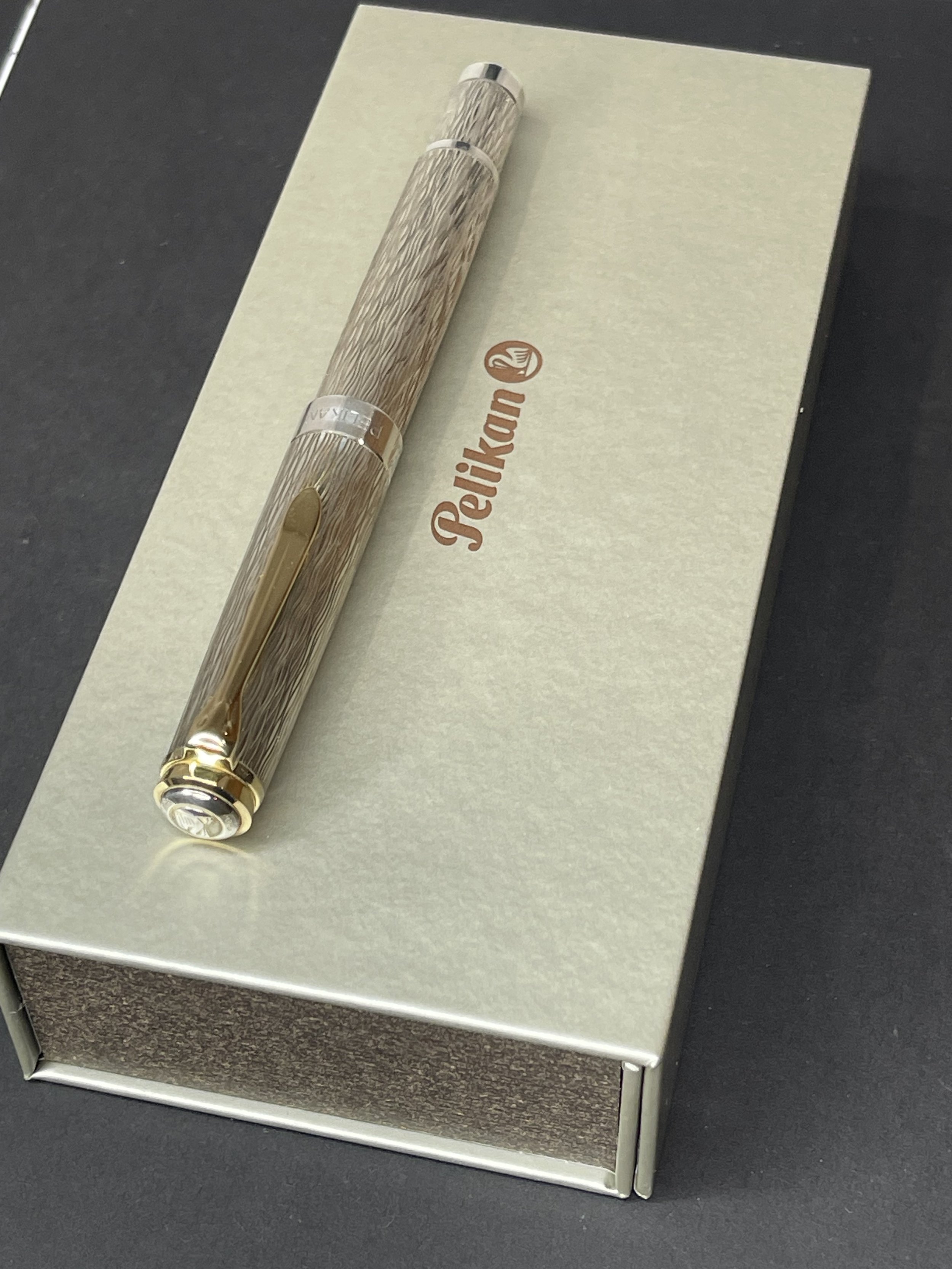
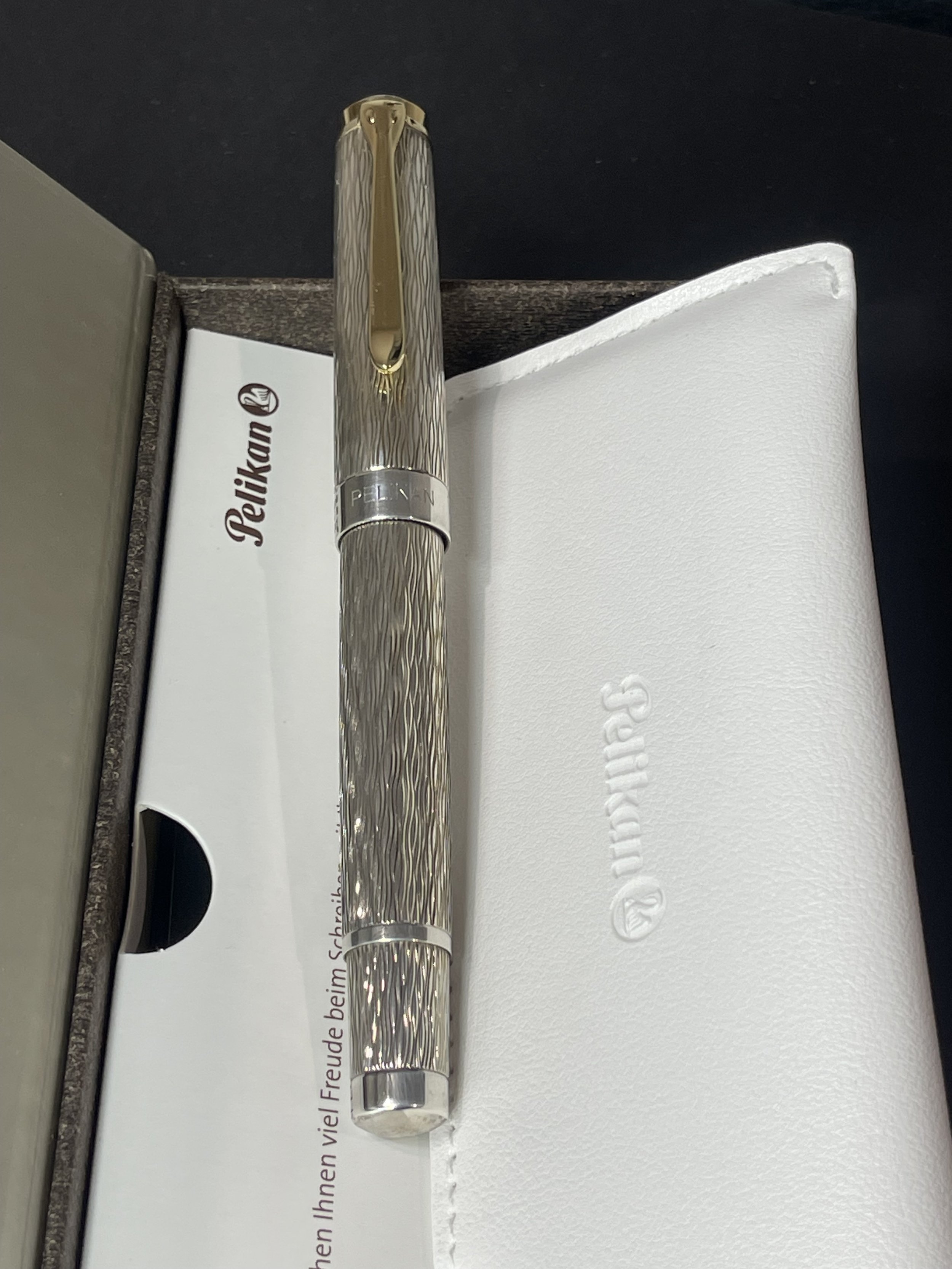


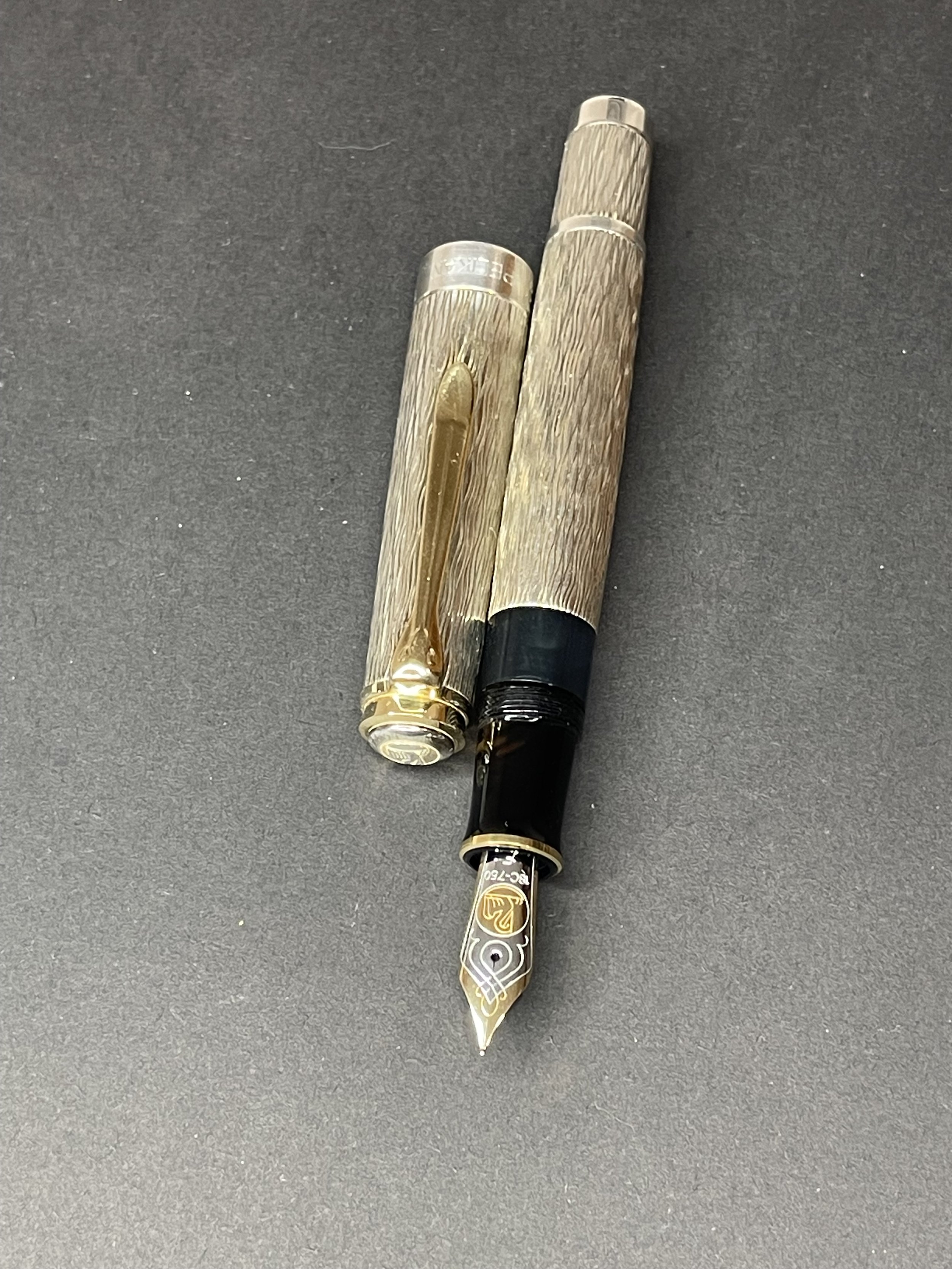
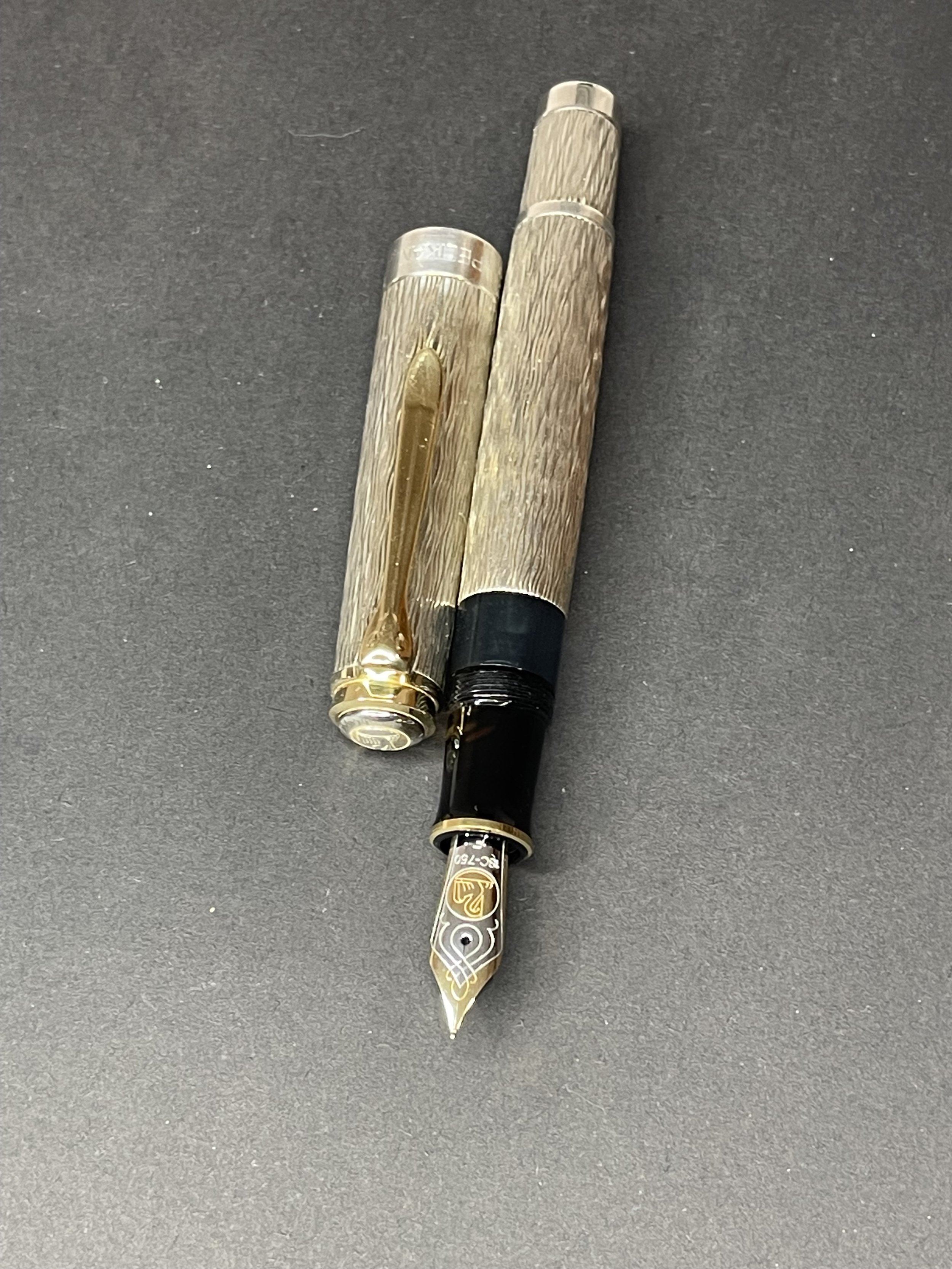


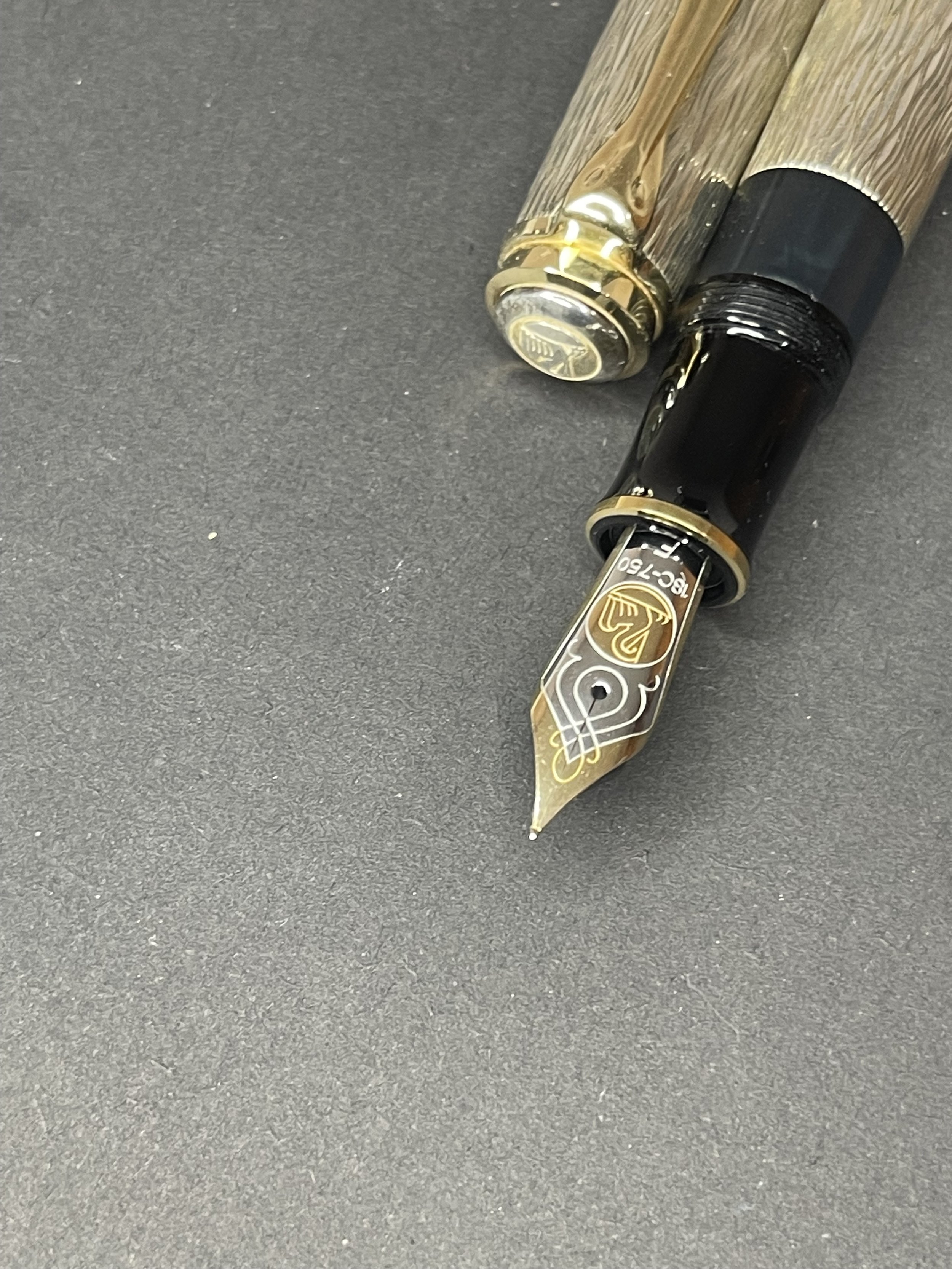

PELIKAN CLASSIC PENS M800 CP6 Charlotte Limited Edition Fountain Pen
PELIKAN CLASSIC PENS M800 CP6 Charlotte Limited Edition 500 Fountain Pen
A pen which is rarely seen on the secondary market.
Limited Edition: ***/500
18C – 750 Medium (M) Nib
Full .925 Sterling Silver - The sixth limited edition in the Classic Pens CP series is the Goethe Pens Marguerite and Charlotte, the fruit of the cooperation among Classic Pens, Pelikan and Murelli
Series Launched in 2002
Only 500 Marguerite Pens Produced
GOETHE - FAUST AND WERTHER
The theme chosen for the CP series is Goethe. The guilloché engravings of the two pens, MARGUERITE and CHARLOTTE were inspired by his works, Faust and Werther.
In the early 1800s, Germany had 280 principalities. One of them Weimar, ruled by a Duke, became the cultural center for Germany and later for Europe. The Weimar Republic started the movement
'Sturm und Drang' (Romantic movement) which launched European Romanticism. Literary figures in Europe like Byron in England, Pushkin in Russia and others followed this movement.
Weimar became the center for Art, Music, and Literature.
Johann Wolfgang von Goethe is widely recognized as the
greatest writer of the German tradition.
The romantic period in Germany of the late eighteenth and early nineteenth centuries is known as the age of Goethe.
His stature derives from a multiple of extraordinary qualities: his literary achievements as a lyric poet, novelist and dramatist; his significant contributions as a scientist (geologist, botanist, anatomist, physicist); as a critic and theorist of literature and of art; as a Statesman (asked by the Weimar Duke to be the Minister of State).
He was such an imposing personality that for the last thirty years of his life, he
was Germany's greatest cultural monument, serving as an object of pilgrimage from all of Europe and even from the United States.
The continuing fascination with his works, especially with Faust confirms his position as one of the most important writers of the European tradition.
Goethe started work on his Faust in the early 1770s. The period of time between his first experiments and the final touches spans more than 60 years. This long companionship and persistent recurrence to the task from youth to old age have made it in a unique way the record of Goethe's personality in all its richness and diversity.
This powerful work can be viewed as a depiction of the personal journey of Faust towards enlightenment. He makes a bet with the devil that he will be allowed to live as long as the devil fails to satisfy his striving for transcendence. Most significantly, Goethe makes the second half of part I into a love tragedy. Faust seduces Marguerite (Gretchen), an innocent young girl who embodies for him the transcendent ideal that he seeks. em the sea. Satisfied that he is workins a forehe ming land humanity, he renounces magic and dies. Divine Grace, however, saves his soul, which is shown ascending in pursuit of an ever receding ideal embodied once more in Marguerite - das Ewig-Weibliche (the eternal feminine).
The autobiography of Goethe describes one of his emotional entanglements. In Wetzlar in 1772 he met Charlotte (Lotte) Buff and fell in love with her before discovering she was engaged to his friend, Johann George Cristian Kestner.
The period 1771 to 1775 contains the first flowering of Goethe's genius. His most famous work is Die Leiden des jungen Werther (The Surrows of Werther).
Young Werther traces in a series of letters written to a friend, the course of his love for Lotte, who is already engaged to a solid young Officer. Mislead by the warmth of her friendship, but most of all by his own intense imagination -- which project upon Lotte all the ideals garnered from his reading of Homer, Goldsmith and Ossian - Werther gradually looses touch with the world around him and finally shoots himself. In this paradigmatic novel of eighteenth century sensibility Goethe describes the first romantic love associated with emotion and passion.
Classic Pens CP6: Marguerite & Charlotte
The traditional art of guilloché engraving has adorned fountain pens for many years and been passed down through generations. Master craftsmen today harmonize this art with computer technology to produce linear patterns in which the lines of engraving run vertically down the pen body.
Circular guilloché patterns are formed with lines of engraving running horizontally around the pen body. They are very distinctive, substantial and of exquisite beauty, but, alas, are virtually unobtainable today. It is a combination of hand crafted
linear and horizontal engravings, which impart the strength and complexity to the mosaique pattern of the CP6 MARGuERITE.
A hand engraver dating from 1927 was reactivated from the Murelli museum. On this machine, Marc Murelli, crafted the mosaique design completely by hand. The engraving process is labor intensive and very lengthy but the result is a magnificent guilloché pattern, unequalled by modern methods. And since the mosaiquepattern is completely hand crafted, every CP CHARLOTTE in the series of 500 pens is a little different from the rest and unique.
Using modern computer technology for linear engraving, as well as the craftsmanship of Murelli, the casçade engraved composition has been created exclusively for the CP CHARLOTTE.
The exquisite casçade pattern reflects the most advanced state-of-the-art concepts in contemporary design.
The CP series of limited editions reflects the Classic Pens policy of devising new and original designs through which writing instruments transcend their function, and become objects of beauty as precious as jewelry, as well as valuable investments and future heirlooms.
The density and complexity of the MARGUERITE mosaique design, has some uniformity, it is pleasing and relaxing to the eye, but at the same time it is powerful. All these elements identify the great poem 'Faust', especially the final part which suggests contentment, order, regularity and comfort. These exclusive patterns were created through the fruitful cooperation between Murelli and Classic Pens.
The sinuous fluidity of the CHARLOTTE casçade pattern represents 'Werther', a novel describing the first romantic love, and associated with youth, emotion and flow of passion.
The CP series of MARGUERITE & CHARLOTTE bears witness to the imaginative originality of Classic Pens, the fastidious craftsmanship of Murelli and the technical precision and expertise of Pelikan.
Condition: Mint, comes in a Pelikan M800 Presentation Box.

